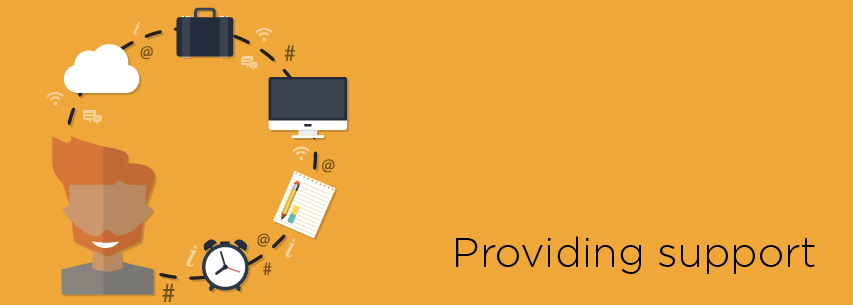Navigating the challenges of change with Make-A-Wish
Most organizations have to go through difficult changes at some point. For some, the changes are more arduous than others. At Make-A-Wish, we recently got a crash course in managing change at our organization when we launched an initiative to get employees collaborating on a new intranet platform. Until recently, Make-A-Wish relied on an internal website that loosely resembled an intranet. The site was essentially a giant document warehouse. Thousands of documents – around 3,500 in total – were housed within dozens of folders and without any discernible order or strategy. The only feature available to help staff navigate the mess was a search function, which rarely returned the desired results. Senior leaders recognized the site’s inefficiencies and determined it was time for a change.
In the past, Make-A-Wish has approached change cautiously. We’re proud of our grassroots beginnings, and that’s reflected in how we adopt new technologies. With our intranet, we wanted to move past our usual approach. We made it our mission to be future-oriented in our thinking, but we knew the site would be met with skepticism if we didn’t handle the transition smoothly. Therefore, early in the project, we developed a change management strategy that we hoped would bring the greatest level of employee satisfaction.
Change management starts with a plan

Our change management began with the development of an Intranet Advisory Team. The team consisted of staff members from all different chapter sizes, job roles and job levels, to ensure every employee’s unique concerns were heard and addressed. The advisory team was consulted before any significant steps were taken in the project. Their input was essential both to the development of the site and for overall buy-in; they became our biggest cheerleaders for the project. We also used the advisory team to gauge how the broader employee population would react to the site.
Communication and incentives create enthusiasm

With the advisory team in place, we turned toward communicating with the rest of the Make-A-Wish employees. We developed a tiered communication strategy that provided different levels of detail on the project to different groups, depending on the group’s involvement and relevance. The Senior Leadership Team might receive a monthly update with timeline and budget information; whereas the larger employee group may only receive quarterly updates as reminders about the project. Overall, the communications goal was two-fold: 1) to make sure no one was taken by surprise about the project and 2) to educate everyone on why the site was needed and, most importantly, how it would benefit them.
Once we reached the launch date for our intranet, we moved into the internal marketing phase where we focused on building anticipation and site usage. At launch, we initiated a contest where anyone who achieved a certain, measurable level of site usage by a specific date would be entered into a drawing for Amazon Kindles. The contest drove traffic to the site and helped staff become more familiar with its new functionality. We also created a professional quality video for the homepage that showed the site’s primary features and how easy they were to use. In addition, banners on the homepage reminded staff about exciting new capabilities as well as where to find some of the most often sought after content.
Providing support

The final step was to ensure that any staff who felt at all intimidated by the new site had resources available to make the site easier to use. Our intranet contains a help section that is full of step-by-step, how-to guides for each of the site’s main features. The guides serve as a valuable resource for staff who don’t intuitively understand how websites tend to operate.
The dividends of a well-received plan

After the site went live, we immediately saw widespread usage to the tune of nearly 100% of Make-A-Wish employees – approximately 1,200 users – visiting the site within the first month. More importantly, the site visitation has continued to stay high even after the original excitement of the site has diminished. In the past month, we have averaged around 600 intranet visits per day. Users are frequently turning to the search feature to dive deeper into the site’s architecture and content. In the last 30 days alone, more than 8,000 searches have been performed. Additionally, within the last 30 days, 720 unique users have accessed a discussion forum starting 56 new discussion threads. All of these metrics point to continued interest in spending time on the intranet and becoming more invested in the site’s features – something that would not have happened had we not adequately prepared the employees for change.
